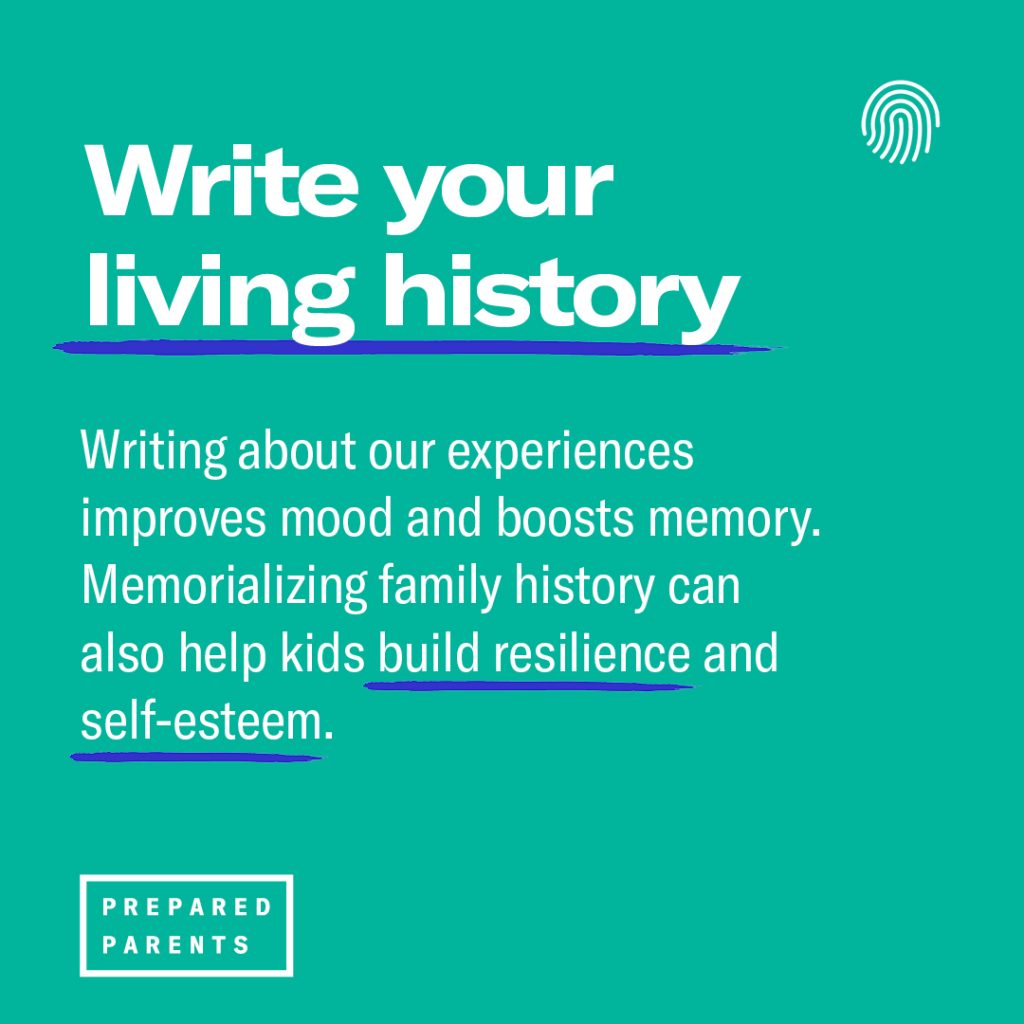Whether we’re living through pandemic times or a more “normal” life, our lives are historic to us. The times we’re living in now will be our kids’ history when they grow older and look back.

Memories fade. Even memories we think are vivid and unforgettable will dull with time. However, by recording their experiences, kids can process and document the history they’re living right now, strengthening their memories and giving themselves a historic artifact to treasure.
Research suggests that writing about yourself and your own experiences can improve mood and boost memory. A 2001 study shows that children who know a lot about their family tend to be more resilient and have higher levels of self-esteem. They also display more self-control, lower levels of anxiety, and fewer behavioral problems.
“When we experience a traumatic event or major transition in life, our minds function to process and understand what’s happening to us. Our thoughts can consume us, but translating these experiences into language gives us a physical piece to contemplate.”
-Dr. James W. Pennebaker, on why recording what’s happening today is valuable
Kids can record their living history by keeping a journal, making it as elaborate or as simple as they’d like.
Help your kid consider the following tips for documenting the history they’re living right now.
Respond to prompts
Kids can record the events of the day, their feelings, fears, and wins. This is a real-world learning moment and an opportunity to use some skills they are developing now. Reflection questions provoke your kids to think about what they want, who they are, what they care about, and how they feel.
You can help by making prompts for your kids with a mixture of questions that they can answer to help them get the hang of it. But don’t overly dictate it for them. Let them be creative!
- Did you learn something new about yourself today?
- Who or what are you grateful for today?
- What makes you feel anxious? What are you doing to calm your anxiety?
- What new interests are you exploring while you’re at home?
- What are you learning about yourself or your family?
Interview others
Have them interview family members, neighbors, and friends to find out about their experiences right now. Brainstorm questions together to ask, and add to the list as the days pass. Older kids interested in data collection can analyze the information to gain useful insights.
Play with format
The journal can be simple or sophisticated; handwritten, typed, or drawn. Kids can make bullet point journals with lists and short-form sentences or scrapbook journals that include articles, images, graphs, and charts. They can add illustrations of the family to personalize this living history.
Not all kids enjoy writing, but they have other options like creating a video or a time capsule.
Your kid’s living history will not only capture this moment in time; it will memorialize your family experience of this moment in history. And through this regular activity, our kids will unknowingly be practicing some really important skills they will need in the future:
- Active listening
- Asking questions
- Comparing and contrasting ideas
- Making connections between ideas
- Being able to identify patterns and see relationships
- Evaluating arguments

